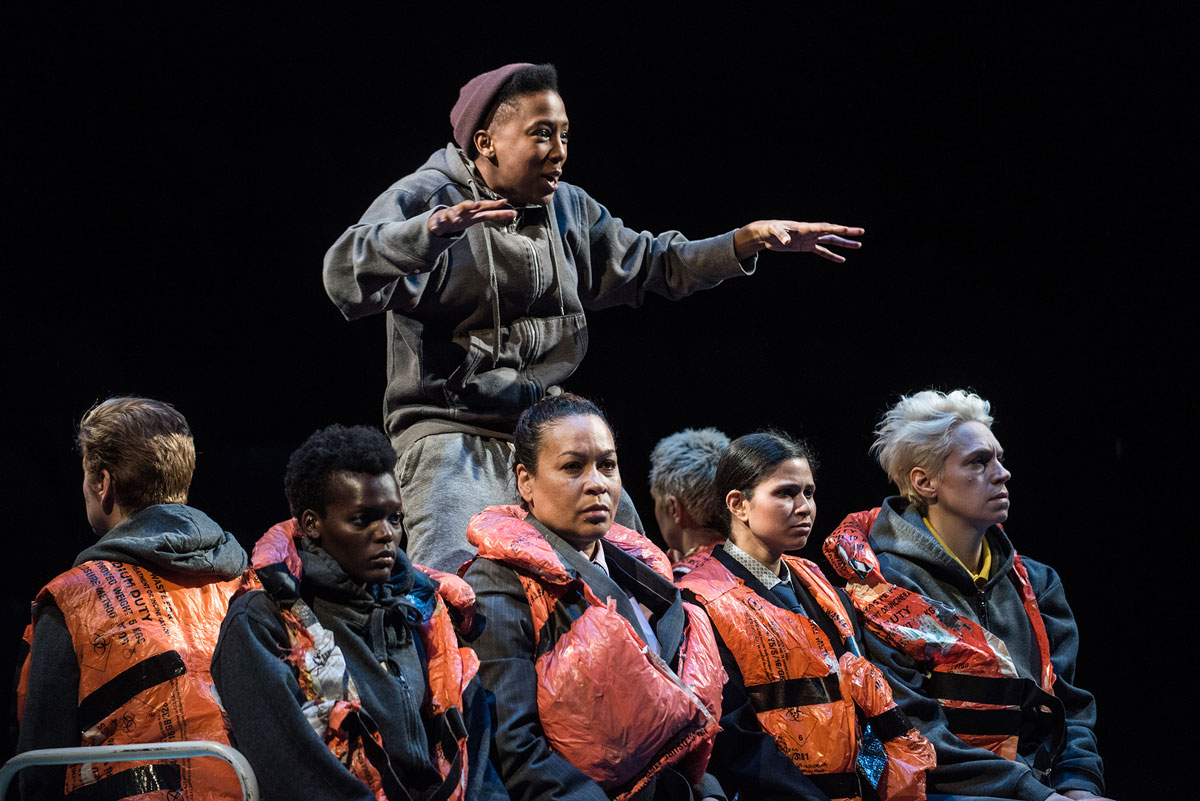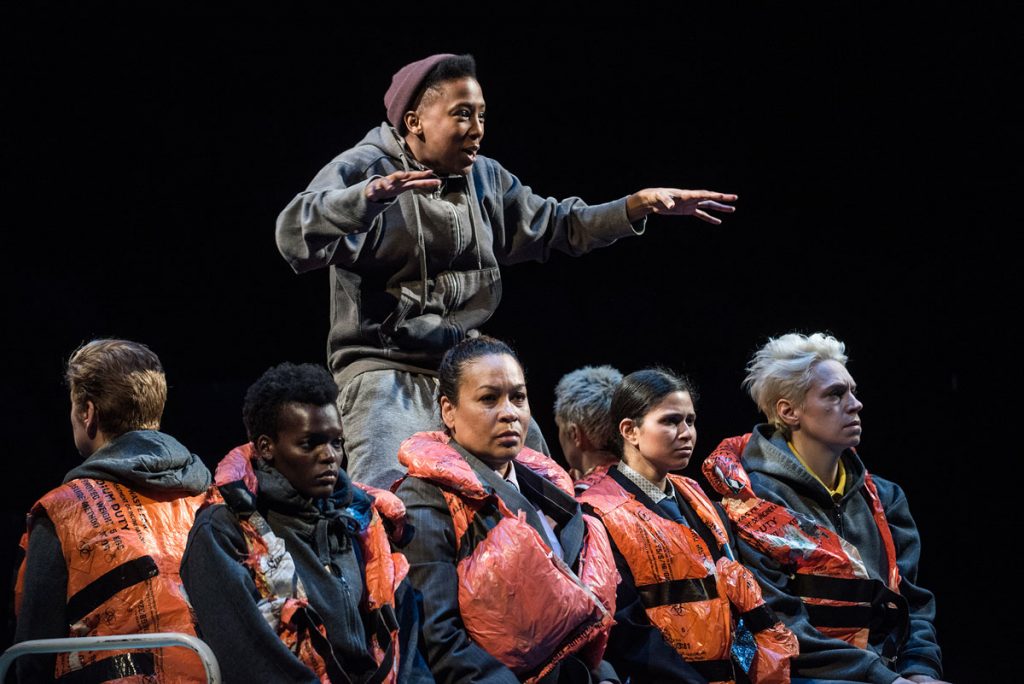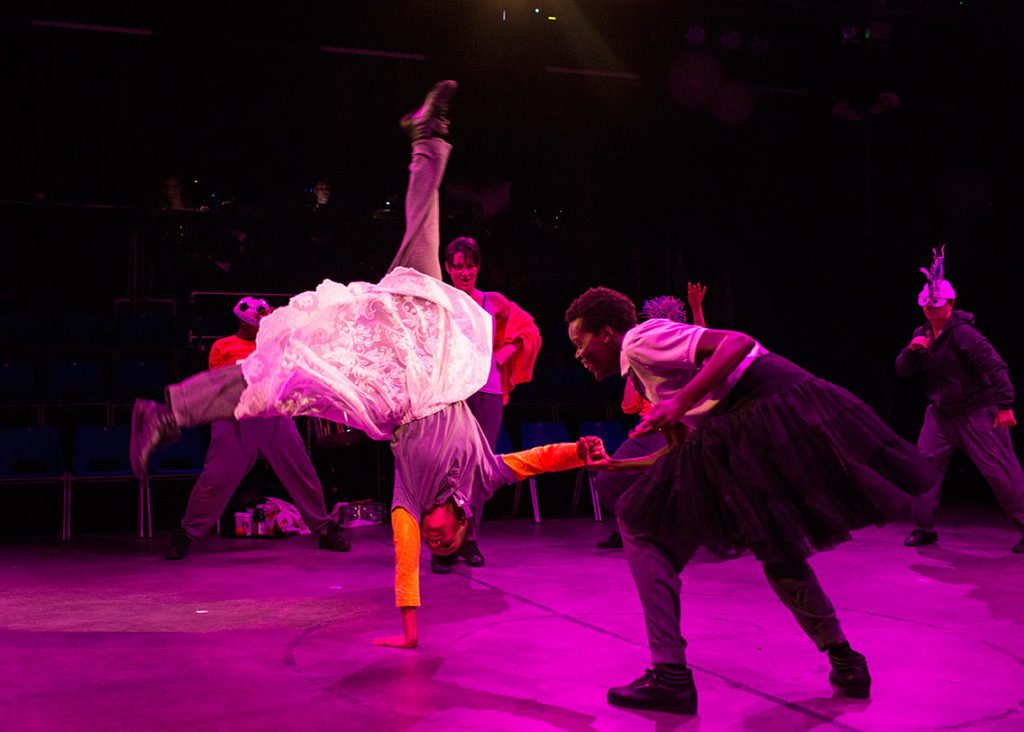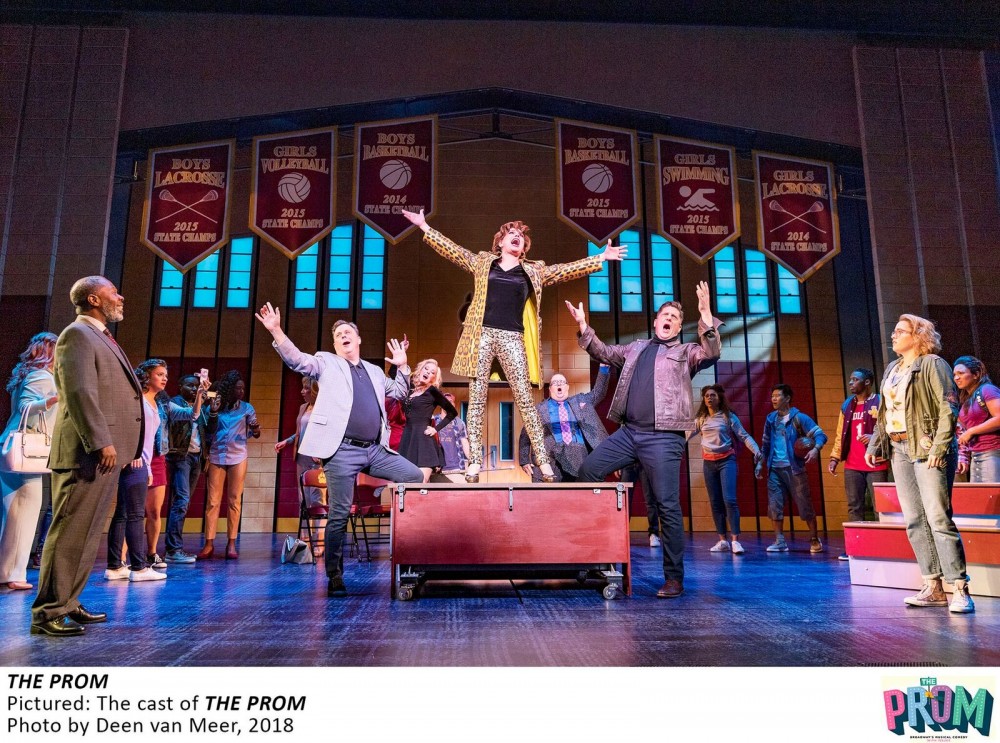by Carol Rocamora
“We are such stuff as dreams are made on,” says Prospero in The Tempest.
Two fearless women of the British theatre share a passionate dream – to provide women with the opportunity to play more Shakespearean roles, and break free from the constraints of conventional casting. The result: an invigorating trilogy of Shakespeare’s classics – Julius Caesar, Henry IV, and The Tempest – directed by Phyllida Lloyd, starring Dame Harriet Walter and an all-female company – produced at London’s Donmar Warehouse and transported to St. Ann’s Warehouse in Brooklyn.
But far from producing a shipwreck like the one in the Tempest, their crossing here has been a smooth and triumphant one.
In addition to the casting, Lloyd and Walter have added another bold concept – to set all the plays in a prison with female inmates performing the roles, and to immerse the audience in this alien environment. The idea came to them in preparation for Julius Caesar – a play about political freedom and justice. It worked wonderfully when I saw it at St. Ann’s in 2013 (with Walters as Brutus) – and was followed by Henry IV in 2015 (with Walters as the king.)
And now comes The Tempest. As we stand in the St. Ann’s lobby waiting for the performance to start, a line of prisoners file past us in chains, flanked by guards. We follow them into the performance space, filled with grandstand seating on four sides. In the center, a playing area representing the prisoners’ basketball court is cleared, save for a bed and a table. It’s there that Walters introduces herself as “Hannah, age 66”, a lifer incarcerated for murder. Soon the rest of the “prisoners” enter and begin performing Shakespeare’s fantastical tale of a sorcerer named Prospero, once a Duke in Milan, washed ashore on a magical island after unjust banishment, who acquires magical powers (and a helpful spirit named Ariel) to set wrongs right.
Set and costume elements are consistent with the play’s setting. Actresses wear prison sweats, yellow t-shirts, black sneakers, and other odds-and-ends. The ship is a metal bed, upon which actresses in red life jackets toss and turn. Staircases in the audience bleachers rise to prison doors (through which inmates occasionally try to escape). Otherwise they’re used as perches (representing craggy cliffs) from which Prospero and Ariel survey the scene below. Similarly, props include empty plastic bottles, cans and other prison detritus strung together to represent wreckage washed up from the storm-tossed sea.
The multi-racial all-female cast is wonderful. Walters is a formidable Prospero, delivering Shakespeare’s words with command and precision. Jade Anouka plays a charming, nimble Ariel. Leah Harvey, as Prospero’s lovely daughter Miranda, makes a winning match with Ferdinand, played by a stunning young actress named Sheila Atim who towers over the rest of the cast. Sophie Stanton, Karen Dunbar and Jackie Clune make a hilarious comedic trio as Caliban, Trinculo, and Stefano. The raucous dance at the wedding scene (set to rock music) is an ensemble tour de force.
The “rough magic” to which Prospero refers happens twice in this spirited production. After the wedding, dozens of huge balloons are brought in, which lighting designer James Farncombe transforms into spheres upon which the terrain of the island and the world’s continents are magically projected (as well as contemporary images that prisoners might dream of, like the Apple and McDonald logos.) It’s a thrilling sight. The second magical moment comes when audience members are asked to turn on the flashlights found at their seats. In darkness, punctuated by tiny light beams, Prospero recites: “Our little life is rounded with a sleep,” and we feel the magic to which he alludes.
Ultimately, the inmates are released – all save Hannah. The prison metaphor serves The Tempest’s themes of freedom well (Prospero freed from his island prison, Ariel freed from servitude.) It also reflects the freeing of actresses from conventional casting constraints. Occasionally, I felt that the production’s high concept got in the way of the play itself. But in the end, Phyllida Lloyd, Harriet Walter, and the ensemble deserve our praise and admiration for their theatrical vision and fortitude. “O brave new world that has such people in it…”
Shakespeare’s The Tempest, directed by Phyllida Lloyd, at St. Ann’s Warehouse, through February 19.
Photos: Helen Maybanks

























